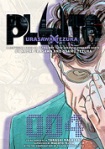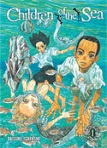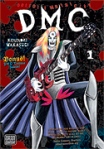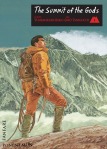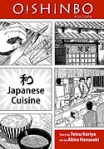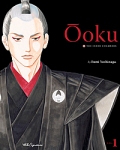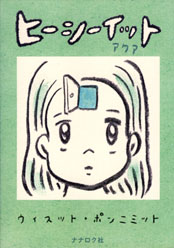The words “final volume” are always a bit bittersweet. While one can eagerly anticipate emotional closure and the tying up of narrative threads, there’s the misty-eyed knowledge that you won’t be paying any new visits to favorite characters and absorbing scenarios. I already mentioned two concluded series yesterday (Kaoru Mori’s Emma and Natsuki Takaya’s Fruits Basket), but here are some other admirable titles that bid farewell in 2009.
 Astral Project, written by marginal, illustrated by Syuji Takeya, four volumes published by CMX. This series was always difficult to summarize, and that’s almost always a sign of a series I’ll enjoy. Part mystery, part science fiction, part scathing satire, part romance, part family drama, part primer on obscure jazz appreciation, and so on, Astral Project managed to juggle its many different aims with nothing quite so showy as aplomb. There’s nothing self-congratulatory about the book’s density of ideas; they’re never underlined or followed with exclamation points. They’re just there, emerging and recurring when they can do the most good or spark the most interest. A great and under-appreciated title.
Astral Project, written by marginal, illustrated by Syuji Takeya, four volumes published by CMX. This series was always difficult to summarize, and that’s almost always a sign of a series I’ll enjoy. Part mystery, part science fiction, part scathing satire, part romance, part family drama, part primer on obscure jazz appreciation, and so on, Astral Project managed to juggle its many different aims with nothing quite so showy as aplomb. There’s nothing self-congratulatory about the book’s density of ideas; they’re never underlined or followed with exclamation points. They’re just there, emerging and recurring when they can do the most good or spark the most interest. A great and under-appreciated title.
 Flower of Life, written and illustrated by Fumi Yoshinaga, four volumes published by Digital Manga. You know what’s weird about Yoshinaga? The bittersweet knowledge that a series will inevitably conclude starts when the license for said series is announced. The certainty of how lovely her comics will be is accompanied by the knowledge that they won’t be nearly long enough. Flower of Life, which follows a group of high-school students through that titular phase, is as funny as it is touching. Every time I post something close to a “Best of” list, I realize that I’ve forgotten something essential, and since the final volume of this series was released in 2009, I hasten to add it to my list of suggested nominees for the Best Publication for Teens Eisner.
Flower of Life, written and illustrated by Fumi Yoshinaga, four volumes published by Digital Manga. You know what’s weird about Yoshinaga? The bittersweet knowledge that a series will inevitably conclude starts when the license for said series is announced. The certainty of how lovely her comics will be is accompanied by the knowledge that they won’t be nearly long enough. Flower of Life, which follows a group of high-school students through that titular phase, is as funny as it is touching. Every time I post something close to a “Best of” list, I realize that I’ve forgotten something essential, and since the final volume of this series was released in 2009, I hasten to add it to my list of suggested nominees for the Best Publication for Teens Eisner.
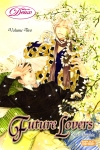 Future Lovers, written and illustrated by Saika Kunieda, two volumes published by Deux Press. You wouldn’t think that two volumes were enough to make one particularly mournful of a title’s conclusion, but yaoi series tend to run shorter than those in other categories, and Future Lovers is just that good. It has the distinction of being one of the best comics about gay people I’ve ever read, which is remarkable for a category that doesn’t routinely concern itself with the realities of sexual orientation. It’s also a splendid romance with terrific characters that inhabit a richly realized context of work, family, friends, and personal history.
Future Lovers, written and illustrated by Saika Kunieda, two volumes published by Deux Press. You wouldn’t think that two volumes were enough to make one particularly mournful of a title’s conclusion, but yaoi series tend to run shorter than those in other categories, and Future Lovers is just that good. It has the distinction of being one of the best comics about gay people I’ve ever read, which is remarkable for a category that doesn’t routinely concern itself with the realities of sexual orientation. It’s also a splendid romance with terrific characters that inhabit a richly realized context of work, family, friends, and personal history.
 Kitchen Princess, written by Natsumi Ando, illustrated by Miyuki Kobayashi, ten volumes published by Del Rey. I have a well-documented lack of resistance for cooking manga, along with equally well-documented weaknesses for sparkly shôjo and desserts of almost every variety. So I was a natural audience member for this title. What surprised me was how emotionally lacerating it would become. It took Ando and Kobayashi a while to really start putting their characters through the ringer, but when they did, it elevated the title from sweet and diverting to something really absorbing and memorable. And it’s hard to go wrong with a comic that offers recipes.
Kitchen Princess, written by Natsumi Ando, illustrated by Miyuki Kobayashi, ten volumes published by Del Rey. I have a well-documented lack of resistance for cooking manga, along with equally well-documented weaknesses for sparkly shôjo and desserts of almost every variety. So I was a natural audience member for this title. What surprised me was how emotionally lacerating it would become. It took Ando and Kobayashi a while to really start putting their characters through the ringer, but when they did, it elevated the title from sweet and diverting to something really absorbing and memorable. And it’s hard to go wrong with a comic that offers recipes.
 Parasyte, written and illustrated by Hitoshi Iwaaki, eight volumes published by Del Rey. Manga as a category offers a rich vein of substantial, thought-provoking science fiction, and Parasyte is an excellent example. Lots of titles ask what it means to be human, and many ask that question in interesting ways. Parasyte certainly does, and it doesn’t skimp on the blood-soaked, pulse-pounding action in the process. It also doesn’t ignore the pulpy absurdity of its premise, sprinkling rueful humor throughout. And it pays keen attention to the emotional evolution of its characters, whether they’re a human teen-ager or a carnivorous parasite trying to figure out its place in the world.
Parasyte, written and illustrated by Hitoshi Iwaaki, eight volumes published by Del Rey. Manga as a category offers a rich vein of substantial, thought-provoking science fiction, and Parasyte is an excellent example. Lots of titles ask what it means to be human, and many ask that question in interesting ways. Parasyte certainly does, and it doesn’t skimp on the blood-soaked, pulse-pounding action in the process. It also doesn’t ignore the pulpy absurdity of its premise, sprinkling rueful humor throughout. And it pays keen attention to the emotional evolution of its characters, whether they’re a human teen-ager or a carnivorous parasite trying to figure out its place in the world.
Now, for two series which both debuted and concluded in 2009 but are worthy of mention all the same:
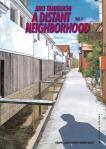 A Distant Neighborhood, written and illustrated by Jiro Taniguchi, two volumes published by Fanfare/Ponent Mon. Does the notion of exploring the middle-aged malaise of a straight man trigger one of your reader defense mechanisms? That’s a perfectly reasonable response, but there are always exceptions to these aversions. It’s about a salaryman who finds himself replaying a critical phase of his own adolescence, and, as Kate Dacey notes, it’s “one of the most emotional, most intimate stories Taniguchi’s ever told.”
A Distant Neighborhood, written and illustrated by Jiro Taniguchi, two volumes published by Fanfare/Ponent Mon. Does the notion of exploring the middle-aged malaise of a straight man trigger one of your reader defense mechanisms? That’s a perfectly reasonable response, but there are always exceptions to these aversions. It’s about a salaryman who finds himself replaying a critical phase of his own adolescence, and, as Kate Dacey notes, it’s “one of the most emotional, most intimate stories Taniguchi’s ever told.”
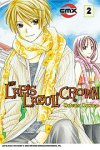 The Lapis Lazuli Crown, written and illustrated by Natsuna Kawase, two volumes published by CMX. As I’ve noted previously, someone at CMX has a real knack for finding sweet (but not cloying), cute (but not pandering), quirky (but not outlandish) shôjo titles for its catalog. This year saw the arrival and departure of Kawase’s endearing fantasy about a young girl who wants to learn how to use her rather random magical powers and finds an ally in the prince of her Epcot-ian kingdom. Kawase’s polished art enhances this entirely pleasant romantic fantasy.
The Lapis Lazuli Crown, written and illustrated by Natsuna Kawase, two volumes published by CMX. As I’ve noted previously, someone at CMX has a real knack for finding sweet (but not cloying), cute (but not pandering), quirky (but not outlandish) shôjo titles for its catalog. This year saw the arrival and departure of Kawase’s endearing fantasy about a young girl who wants to learn how to use her rather random magical powers and finds an ally in the prince of her Epcot-ian kingdom. Kawase’s polished art enhances this entirely pleasant romantic fantasy.
So what are some of your favorite concluding series of 2009?
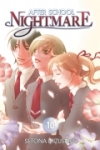 Updated: After School Nightmare, written and illustrated by Setona Mizushiro, ten volumes published by Go! Comi. Maybe it’s a sign of how strong this year was overall, or maybe I’m just an airhead. Whatever the cause, I can’t believe I forgot After School Nightmare on this list, seeing as it’s one of my favorite series of all time. A complex psychological drama, this follows a group of teenagers into a dreamscape where they battle for identity, not to mention the drama this imposes on their waking hours. Excellent in so many ways, this series is worth the price of admission for cute-on-the-outside Kureha’s fascinating character arc and gradual empowerment.
Updated: After School Nightmare, written and illustrated by Setona Mizushiro, ten volumes published by Go! Comi. Maybe it’s a sign of how strong this year was overall, or maybe I’m just an airhead. Whatever the cause, I can’t believe I forgot After School Nightmare on this list, seeing as it’s one of my favorite series of all time. A complex psychological drama, this follows a group of teenagers into a dreamscape where they battle for identity, not to mention the drama this imposes on their waking hours. Excellent in so many ways, this series is worth the price of admission for cute-on-the-outside Kureha’s fascinating character arc and gradual empowerment.
